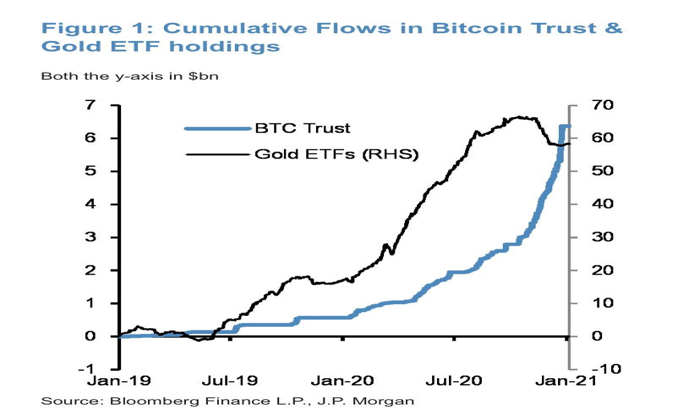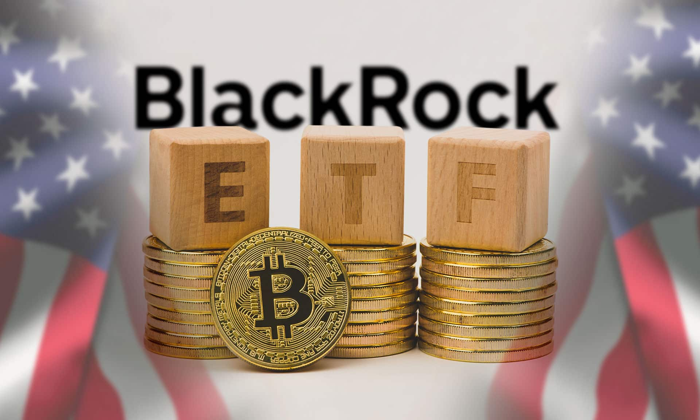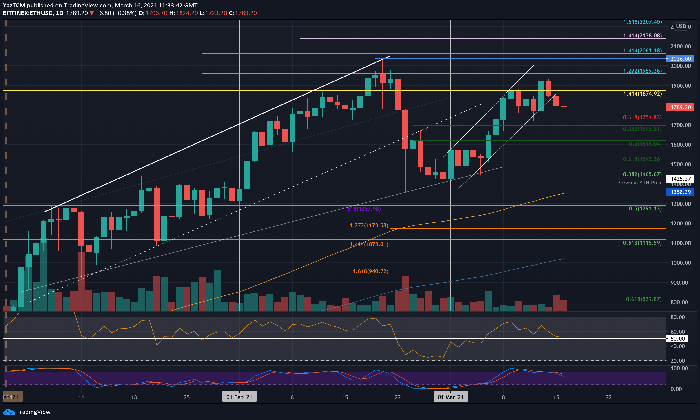Bitcoin ETF inflows have recently soared to unprecedented levels, exceeding 500 times the daily average for 2025, signaling a major shift in the ETF market. This surge is largely attributed to heightened institutional investment in Bitcoin, driven by a significant rise in BTC price that has reignited interest among big players. As analysts closely monitor these inflows, the connection between Bitcoin ETFs and the price movements of Bitcoin has never been more apparent, with ETFs playing a pivotal role in shaping market dynamics. The influx of capital into Bitcoin exchange-traded funds reflects not only a growing acceptance of digital asset investments but also bolsters confidence in the cryptocurrency’s future. With this substantial increase, the ETF landscape is evolving, potentially influencing the broader financial ecosystem and redefining investment strategies across the board.
In recent times, the capital flowing into Bitcoin-linked exchange-traded funds (ETFs) has experienced an extraordinary uptick, underscoring the increasing appetite for these investment vehicles. This dramatic rise is indicative of an upsurge in institutional backing for the leading cryptocurrency, which has been further propelled by notable fluctuations in BTC’s market valuation. As the ETF sector gains traction, it is crucial to examine how these investment products are becoming pivotal players in the overall cryptocurrency landscape. The significant interest in Bitcoin ETFs reflects a broader shift towards digital asset exposure, showcasing an innovative approach to harness the potential of blockchain technology. Such transformations in the ETF market may set new benchmarks for how institutional investors navigate their portfolios with alternative financial instruments.
Bitcoin ETF Inflows Break Records in 2025
In an unprecedented shift, Bitcoin ETF inflows in 2025 have exceeded expectations, marking a significant historical moment for the cryptocurrency market. On April 22, inflows reached a staggering $912 million, which is over 500 times the daily average for the year. This record-breaking figure points to an invigorated interest from institutional investors who are seeking to capitalize on Bitcoin’s volatility and potential price gains. Analysts at Glassnode have indicated that this recent surge aligns with substantial recoveries in BTC price, igniting renewed confidence in digital asset investments.
Such monumental inflows from ETFs underscore a changing landscape in the cryptocurrency space. With these investments surpassing the previous historical averages, it’s clear that institutional players are increasingly viewing Bitcoin ETFs as primary vehicles for exposure to Bitcoin. This trend highlights how institutional investment is beginning to dictate movements within the ETF market, allowing these funds to emerge as marginal buyers capable of influencing buying patterns in the wider Bitcoin marketplace.
The Influence of Bitcoin ETFs on Market Dynamics
As Bitcoin ETFs become more prevalent, their ability to sway market dynamics cannot be understated. The inflows observed on April 22, for instance, represent the largest daily increase since late 2024, demonstrating how closely linked the performance of ETFs is to Bitcoin’s price fluctuations. This phenomenon is not merely coincidental; ETF investments have shown to play a crucial role in determining overall market activities, especially during periods of great volatility. With Bitcoin now at a price of $93,723, the role of ETFs could become even more pronounced in shaping future price trends.
Moreover, the diversification within the ETF marketplace is noteworthy. Different ETFs, including product offerings from major financial players like BlackRock, have collectively drawn in significant capital, signaling a shift away from reliance on single products. analysts anticipate that this growing interest in various Bitcoin-backed ETFs will create a competitive environment that could ultimately stabilize BTC prices, making these digital asset investments more appealing to a broader range of investors.
Institutional Investment Trends and Their Impact on Bitcoin
The increasing institutional investment in Bitcoin ETFs reflects changing attitudes towards cryptocurrencies among large financial entities. The remarkable inflow of $912 million on April 22 not only illustrates a resurgence in demand but also indicates a strategic shift as institutions seek to hedge against traditional market inefficiencies. With Bitcoin’s market capitalization reaching approximately $1.86 trillion, institutional players recognize the power of BTC as a significant asset class worth investing in.
Furthermore, the ongoing trend of institutional investment suggests that reputable firms are starting to trust Bitcoin as a viable long-term store of value. As digital asset investments continue to rise, propelled by events like the substantial ETF inflows, we can expect institutional appetite for Bitcoin to grow even further. This shift will likely draw additional retail investors into the market, creating a broader base of support and potentially driving BTC prices upwards based on increased demand.
The Role of ETFs in Enhancing Crypto Market Liquidity
Exchange-traded funds (ETFs) act as a vital conduit between traditional finance and the volatile world of cryptocurrencies. With Bitcoin ETF inflows substantially expanding in 2025, these funds are enhancing liquidity in the crypto market. Investors are increasingly opting for ETFs to gain exposure to Bitcoin without the complexities of directly purchasing or storing the cryptocurrency. This rising trend significantly boosts market liquidity, enabling quicker trading and reducing price volatility.
In essence, ETFs provide a safe and regulated environment for investors to engage with digital asset investments. As they accumulate more assets, ETFs contribute to lowering the bid-ask spreads in Bitcoin trading, which in turn attracts more traders and institutional players. Enhanced liquidity from inflows not only stabilizes Bitcoin’s price but also enhances the overall integrity of the cryptocurrency market, ensuring it remains robust amidst fluctuating investor sentiments.
Digital Asset Investments: A Focal Point for Institutional Investors
Digital asset investments are increasingly becoming a focal point for institutional investors, a trend heavily evidenced by the unprecedented inflow into Bitcoin ETFs in 2025. With Bitcoin emerging as a leading player in the digital economy, institutional investors are reevaluating their portfolios to include this asset class. The recent surge in Bitcoin’s price alongside substantial ETF inflows indicates that these investments are no longer a niche area, but rather a central consideration for hedge funds and large financial institutions.
Beyond Bitcoin, this growing interest signifies a broader acceptance of various cryptocurrency assets within institutional frameworks. As organizations recognize the potential for digital assets to provide diversification and hedging opportunities, we can expect to see a continued uptick in investment flows into various ETFs targeting a range of digital currencies. Such a shift not only legitimizes the cryptocurrency market but also projects a forward-thinking approach to leveraging emerging financial technologies.
BTC Price Volatility: ETF Reactions and Market Sentiment
BTC price volatility has proven to be both an opportunity and a challenge for institutional investors engaging with Bitcoin ETFs. The recent price fluctuations have prompted institutions to revisit their strategies, often reacting quickly to significant price movements. The ability of ETFs to facilitate rapid investments is essential during periods of volatility, as shown by the remarkable inflow experienced in April 2025, when prices surged just after a six-week high.
What makes this connection noteworthy is how institutions are beginning to leverage these price changes as a strategy for maximizing returns. As the BTC price sees-sawed, ETF managers were able to strategically position their funds to capitalize on upward trends and mitigate losses during downturns. This dynamic interaction between BTC price performance and ETF inflows is likely to shape future investments as the landscape matures and more institutional players enter the cryptocurrency market.
The Future of Bitcoin ETFs in a Changing Market
As Bitcoin continues to gain traction as a legitimate asset class, the future of Bitcoin ETFs appears promising, especially in light of the recent substantial inflows. As investments in Bitcoin ETFs rise, market analysts predict that additional funds will follow suit, creating a self-reinforcing cycle of interest and investment in the cryptocurrency market. The ongoing developments in regulatory frameworks are also expected to support the growth of Bitcoin ETFs, further enhancing their appeal to institutional investors.
Additionally, we can anticipate that these investments will pave the way for innovative ETF products tailored to specific client needs, ranging from risk-managed strategies to leveraged Bitcoin ETFs. As interest in Bitcoin and other digital assets rises, becoming institutional-grade products, the ETF landscape will likely continue to evolve, providing diverse options for investors and establishing Bitcoin ETFs as a cornerstone of cryptocurrency investment strategies moving forward.
Market Sentiment and its Correlation with ETF Performance
Market sentiment plays an integral role in the performance of Bitcoin ETFs, often acting as a leading indicator for institutional investment flows. The significant inflow of over $912 million on April 22 reflects not only increased buying activity but also a shift in sentiment toward Bitcoin, driven by recent price surges. As market sentiment strengthens, institutions are more likely to commit substantial resources to Bitcoin ETFs, driving demand and inflating the investment funnel.
Conversely, adverse market sentiment can lead to dramatic outflows, as seen in the weeks prior to the April surge. Understanding these dynamics helps investors gauge the market’s health and predict upcoming trends in ETF performance. As a result, monitoring sentiment indicators alongside ETF inflows is essential for investors looking to navigate this rapidly evolving asset class.
Comparative Analysis: Bitcoin ETFs vs Other Investment Vehicles
When compared with traditional investment vehicles, Bitcoin ETFs offer unique advantages that are attracting a growing number of institutional investors. Unlike direct Bitcoin purchases, ETFs simplify the investment process, providing exposure without requiring complex wallet management. Additionally, these vehicles allow for easier diversification within digital asset investments, which can mitigate risks associated with Bitcoin’s inherent volatility. As the recent inflows indicate, more institutional players recognize these benefits and are moving away from direct ownership.
Moreover, Bitcoin ETFs provide regulated avenues for investment, enhancing confidence among institutions wary of the unregulated nature of cryptocurrencies. As the market matures, we are likely to see continued expansion in the ETF space, including the introduction of products that cater to various investor needs, thereby solidifying Bitcoin ETFs as a crucial component of a diversified investment strategy focused on digital assets.
The Effect of Institutional Interest on Bitcoin ETF Flows
The surge in institutional interest in Bitcoin and cryptocurrency as a whole significantly impacts the inflows into Bitcoin ETFs. As institutions continue to inject capital into these funds, the correlation between institutional sentiment and Bitcoin prices becomes more evident. The remarkable inflow of over $912 million on April 22 exemplifies how institutional investors are leveraging Bitcoin ETFs to gain exposure to Bitcoin while managing risks effectively. This level of participation indicates a shift in market dynamics, where institutional players are no longer sidelined but instrumental in driving market activity and sentiment.
Moreover, as institutional investments become more prominent, they establish benchmarks that may influence retail investor behavior. Increased fidelity in Bitcoin ETF inflows fosters a climate of confidence, encouraging other investors to see the potential for long-term gains. As Bitcoin approaches a pivotal price of $93,723, institutional interest signals a robust belief in the asset’s future, further enhancing its legitimacy as an investment vehicle.
Frequently Asked Questions
What factors are driving Bitcoin ETF inflows in 2025?
The driving forces behind Bitcoin ETF inflows in 2025 include increased institutional investment and notable spikes in BTC prices. On April 22, inflows exceeded 500 times the average daily rate as institutional investors responded to bullish market conditions, highlighting the growing influence of Bitcoin ETFs in the digital asset market.
How do Bitcoin ETF inflows impact BTC prices?
Bitcoin ETF inflows significantly impact BTC prices as they represent substantial institutional investment into Bitcoin. Increased inflows can lead to higher demand for Bitcoin, pushing prices up, as evidenced by the substantial inflows on April 22 that coincided with increased BTC prices. This relationship underscores the importance of the ETF market in shaping Bitcoin’s value.
Are Bitcoin ETFs becoming the main source of institutional investment in cryptocurrencies?
Yes, Bitcoin ETFs are emerging as a primary avenue for institutional investment in cryptocurrencies, as shown by recent data indicating they have become the ‘marginal buyers’ of Bitcoin. This trend illustrates the increasing reliance on ETFs for large-scale digital asset investments, especially after significant inflows were reported in 2025.
What is the significance of the recent Bitcoin ETF inflow data from Glassnode?
The recent data from Glassnode shows that Bitcoin ETF inflows on April 22 totaled $912 million, marking a significant deviation from the daily average for 2025. This spike indicates a resurgence in demand for Bitcoin and reinforces the impactful role that BTC-focused ETFs play in the broader ETF market.
How often do Bitcoin ETFs attract significant inflows?
Significant inflows into Bitcoin ETFs are not common but can occur during periods of substantial market sentiment changes or price recoveries. The April 22 inflow, which was over 500 times the daily average for 2025, illustrates how heightened investor interest and favorable BTC price movements can drive large-scale ETF investments.
What does it mean for Bitcoin ETFs to be ‘marginal buyers’ of BTC?
When Bitcoin ETFs are referred to as ‘marginal buyers’ of BTC, it means that their investments can influence market dynamics, either stabilizing or driving price trends depending on the volume of inflows. The term reflects the growing importance of ETFs in Bitcoin trading, especially when significant inflows are involved.
Will Bitcoin ETF inflows continue to rise in the coming months?
While it’s difficult to predict future trends, the current momentum suggests that Bitcoin ETF inflows may continue to rise, especially if BTC prices stabilize or increase further. Analysts are optimistic about ongoing institutional interest, indicating that Bitcoin ETFs could play a critical role in future market developments.
| Date | Event | Details | Impact |
|---|---|---|---|
| April 22, 2025 | Surge in Bitcoin ETF inflows | Institutions invested $912 million into U.S. spot Bitcoin ETFs, over 500 times the daily average for 2025. | Highlights a significant resurgence in institutional demand. |
| Historical Average | Average daily inflow in 2025 was 23 BTC ($2.1 million). | Demonstrates dramatic sentiment changes and previous outflows. | |
| Overall ETF Performance | Overall, $912 million is about 11.5 times the average since the ETFs launched in January 2024. | Indicates the significant influence of ETFs in the market. | |
| Market Integration | ETFs have become marginal buyers of Bitcoin since early 2024, influencing net buying volumes on exchanges. | Highlights the role of ETFs in determining market dynamics. |
Summary
Bitcoin ETF inflows have dramatically surged, exceeding 500 times the daily average for 2025 on April 22, 2025. This surge is attributed to increased institutional investments, emphasizing the growing influence of Bitcoin ETFs in financial markets. The data reveals not only a remarkable recovery following six-week highs in BTC price but also signals a decisive shift in institutional sentiment toward Bitcoin. Analysts believe these ETFs are now pivotal in dictating price movements, marking a pivotal moment for Bitcoin as it continues to mature as an asset class.
Bitcoin ETF inflows have reached unprecedented levels, exceeding 500 times the daily average expected for 2025 in what analysts are calling a remarkable shift in the ETF market. This surge in institutional investment comes on the heels of significant increases in BTC price, showcasing a renewed interest in digital asset investments. On April 22, a staggering total of $912 million was funneled into U.S. spot Bitcoin exchange-traded funds, highlighting a pivotal moment in the market. The implications of this influx suggest that Bitcoin ETFs may have gained enough momentum to influence the broader trends in cryptocurrency trading. As market participants watch closely, the connection between ETF flows and BTC prices could redefine how investors approach the digital asset landscape moving forward.
The recent surge in Bitcoin exchange-traded fund (ETF) inflows represents a transformational period for digital investments, as institutional players rapidly reassess their strategies. After a prolonged focus on alternative assets, large-scale investments in these cryptocurrency products have surged in response to bullish trends affecting Bitcoin’s valuation. The impressive uptick in capital flowing into ETFs not only reflects changing investor sentiment but also points to the evolving dynamics within the crypto realm. As the ETF landscape matures, these financial instruments are emerging as critical catalysts for Bitcoin price movements and overall market behavior. This new phase indicates a potentially reinvigorated appetite for digital currencies amid a landscape characterized by innovation and increased regulatory scrutiny.














